In the following circuit I move an iron rod back and forth inside a solenoid (represented by Rsol and Lsol) and measure voltage fluctuations across the terminals. I do this under two scenarios: with and without R shorted.
In each scenario, I adjust DC source V1 so that the DC current through the coil is the same. So with R shorted the supply voltage is lower and with the R in the circuit the supply voltage is higher.
Note: Rs is output resistance of my voltage source and Rsol is DC resistance of the solenoid. R >> Rsol >> Rs.
With the scope measuring across the solenoid terminals, I see that the AC component of the voltage resulting from oscillating the rod in the coil is higher with R in the circuit. Why?
My (probably flawed) understanding of back-emf is that it effectively acts to raise or lower the voltage at the terminals of the inductor. The consequence of this is generally that a current results (if there's a path for it), but back-emf is principally a voltage is it not? Since I'm measuring right at the solenoid terminals and the back-emf (AC) can be distinguished from supply voltage (DC), I thought this represents a direct measurement of back-emf.
UPDATE:
I think maybe what I was missing is that the back emf manifests across Lsol alone, not Lsol and Rsol. With that, is the following relationship correct, where Vsolenoidterminals is the measured AC component (ignoring DC)?
$$V_{solenoidterminals} = V_{bemf} - I_{bemf}R_{sol} $$ $$= V_{bemf} -\frac{V_{bemf}R_{sol}}{R_{s} + R + R_{sol}} $$ $$= \frac{V_{bemf}\left ( R_{s} + R \right )}{R_{s}+R+R_{sol}}$$
...so for very large R, you're effectively measuring back emf directly while for R=0 you're measuring a fraction of it which depends on how much bigger Rsol is than Rs?
